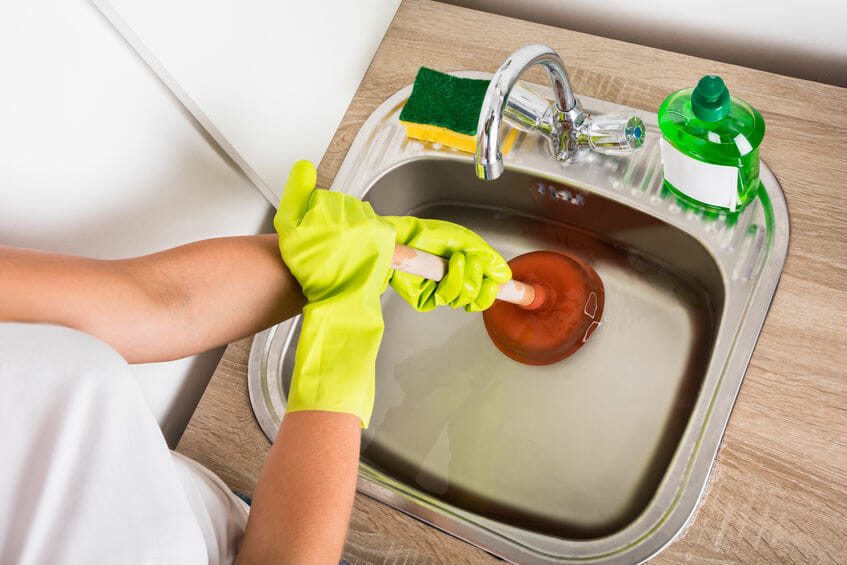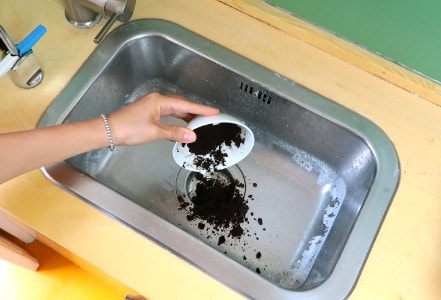From Grease To Debris - 6 Challenges Blocking Your Kitchen Sink
From Grease To Debris - 6 Challenges Blocking Your Kitchen Sink
Blog Article
This great article listed below relating to Easy Ways to Unclog Any Drain in Your Home is amazingly insightful. Read on and make your own findings.

It's not normal for your kitchen sink to clog up several times in one month. If your sink blocks twice a week, there's some trouble going on.
A blocked kitchen area drainpipe does not simply reduce your jobs, it degrades your entire plumbing system, bit by bit. Here are some typical practices that motivate sink obstructions, as well as exactly how to prevent them.
You require correct garbage disposal
Reusing waste is wonderful, yet do you take notice of your natural waste also? Your cooking area needs to have 2 different waste boxes; one for recyclable plastics and also an additional for natural waste, which can come to be garden compost.
Having actually a marked trash can will certainly assist you as well as your household prevent throwing pasta and other food remnants away. Commonly, these residues soak up wetness as well as end up being blockages.
The fault isn't from your kitchen sink in all
Possibly the trouble isn't from your kitchen area sink, however the entire drainage system. In such a case, you might observe that other sinks and drains obtain obstructed every other week. You require an expert plumbing service to repair this.
You're tossing coffee down the tubes
Utilized coffee grounds and also coffee beans still soak up a considerable amount of moisture. They might appear small enough to throw down the drain, but as time takes place they start to swell as well as take up even more area.
Your coffee grounds should enter into organic waste disposal. Whatever portion gets away (possibly while you're washing up) will certainly be looked after during your month-to-month clean-up.
You've been consuming a lot of greasy foods
Your cooking area sink may still obtain obstructed even with natural waste disposal. This may be due to the fact that you have a diet plan rich in oily foods like cheeseburgers.
This grease layers the insides of pipes, making them narrower as well as more clog-prone.
Make use of a plunger
Your pipeline wasn't taken care of properly to begin with
If you've been doing none of the above, however still obtain routine obstructions in your kitchen sink, you should certainly call a plumber. There might be an issue with how your pipelines were mounted.
While your plumber shows up, look for any leakages or abnormalities around your kitchen pipelines. Don't attempt to deal with the pipes on your own. This might cause a mishap or a cooking area flood.
A person tried to wash their hair in the cooking area sink
There's a right time as well as area for everything. The kitchen area sink is simply not the right location to clean your hair. Cleaning your hair in the kitchen sink will make it obstruct sooner or later unless you utilize a drainpipe catcher.
While a drainpipe catcher might catch a lot of the fallouts, some strands may still survive. If you have thick hair, this might be enough to decrease your water drainage and ultimately develop an obstruction.
There's more dirt than your pipes can manage
If you obtain fruits directly from a farm, you may observe even more cooking area dirt than other people that shop from a shopping center. You can conveniently repair this by cleaning the fruits and veggies correctly prior to bringing them right into your house.You require proper waste disposal
My Kitchen Sink Won’t Drain - What Should I Do?
If Your Sink Has a Garbage Disposal...
Turn on the disposal. If the disposal hums and doesn’t turn, then there’s clog in the disposal unit.
Go to your circuit breaker panel, and switch off the circuit breaker to your garbage disposal.
Back in your kitchen, double-check that your garbage disposal is off by trying to turn it on. The disposal should not move, and it should not make any noise.
Lie down underneath your sink so that you can see and access the bottom of the disposal unit. Look for a hole that looks like the head of a hex-head bolt in the center of the unit.
Place an Allen wrench inside this hole and turn it from side to side until you feel a decrease in resistance and are able to rotate the wrench completely in a single direction. This action rotates your disposal’s blade manually.
Put the wrench aside, and press the disposal unit’s reset button or switch.
Flip your garbage disposal’s circuit breaker switch back on, and turn on the unit to see if the obstruction has cleared. If it hasn’t, repeat the steps above until the obstruction is removed.
How to Unclog a Kitchen Sink Drain
If you have a double bowl sink, seal one side of the sink with an airtight lid or a second plunger before plunging the other side. Otherwise, you won’t be able to create adequate suction.
Place the cup of the plunger completely over the drain opening.
Turn on the faucet, and let the water run until it completely covers the cup of the plunger.
Start plunging by pushing the plunger down and pulling up again in order to build up suction. Make sure that the edges of the plunger stay in contact with your sink, or else you’ll lose the suction.
If you have trouble forming a seal between your sink and plunger, add petroleum jelly to the mouth of your plunger, and try again.
Plunge about five or six times before removing the plunger to see if water starts to drain properly. In some cases, you’ll even be able to feel the clog become dislodged while you plunge because suddenly there will be much less resistance. Repeat the plunging process until the clog clears.
Once water is draining properly again, run hot water down the drain for 5 minutes to help clear away grease, grime, and debris from the clog. https://www.plumbingjoint.com/blog/2019/august/my-kitchen-sink-won-t-drain-what-should-i-do-/

My Kitchen Sink Won’t Drain - What Should I Do?
If Your Sink Has a Garbage Disposal...
How to Unclog a Kitchen Sink Drain
https://www.plumbingjoint.com/blog/2019/august/my-kitchen-sink-won-t-drain-what-should-i-do-/
I ran across that write up about Why Is My Sink Not Draining? while doing a search on the internet. Those who appreciated our blog post please be sure to share it. Thanks so much for going through it.
Click For More Info
Report this page